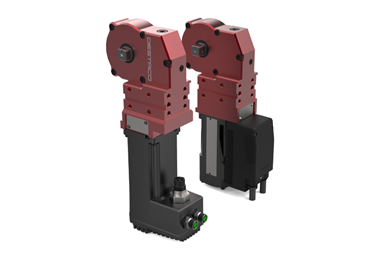Destaco Electric Power Clamps Enable Flexible Production
The 92W series electric power clamps feature integrated intelligence to reduce the need for additional components.
Destaco has introduced the intelligent 92W series electric power clamps. Operating completely without compressed air, the 92W power clamps are designed to enable efficient, environmentally friendly production operations. They reduce energy consumption and CO2 emissions, while providing a plug-and-play solution for flexible production processes.
The 92W power clamp’s integrated intelligence reduces the need for additional components, as it provides essential data for process optimization even without external sensors. Even during installation, these values enable users to conveniently adjust the speed, positioning and/or torque to “fine-tune” production. During subsequent operation, the values are used to analyze process quality.
The control of the electric clamps is decentralized and attached directly to the production devices, which reduces cable lengths and cabling costs. In this way, all automation functions can be implemented decentrally. This not only frees up space, but also enables seamless integration of the clamping technology into the production system. Reliable voltage, signal and data management also facilitate digital planning, along with providing quick and easy installation and commissioning. All of these features save time and reduce labor costs.
The powerful 92W electric power clamps hold workpieces in several positions; for example, during the production and assembly of body shells. Due to the power clamp’s integrated component control, no external sensors are required. In combination with the unit’s integrated tolerance compensation, this enables the control and production of different component types.
In parallel to the smart electric clamps of the 92W Series, Destaco is launching further economical variants of the series that also feature electric drives, including DPE/RPE grippers, GTB/RPE servo positioners and EcoCup vacuum cups.
RELATED CONTENT
-
Advantages of Cellular Manufacturing
Manufacturing cells are used to minimize product movement as well as materials, equipment and labor during the manufacturing process. By reducing cycle times and material handling, these cells help shops more easily meet customer demands regarding cost, quality and leadtimes.
-
When Thread Milling Makes Sense
Threading a workpiece is a fundamental metalworking process that every manufacturing engineer takes for granted.
-
The Many Sides of Workholding
Here's a broad look at different ways to approach workholding, from bar feeders to collet chucks to robotics.




